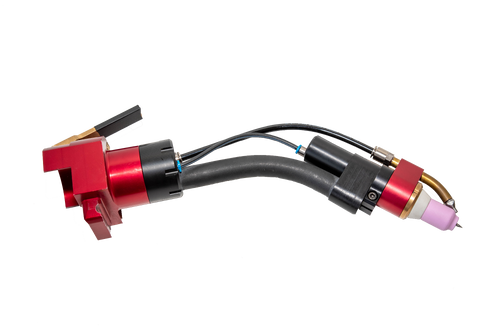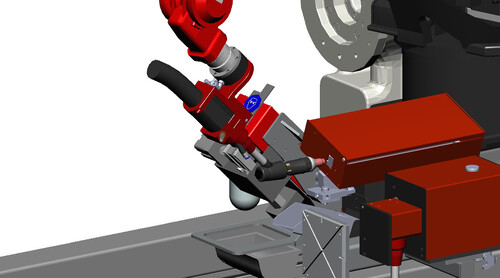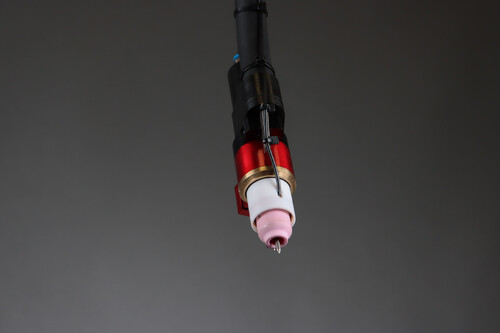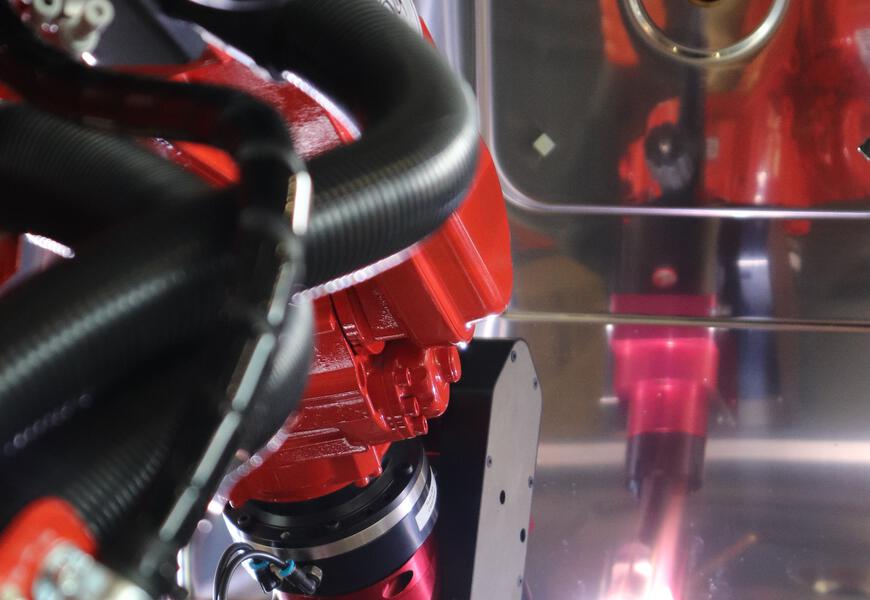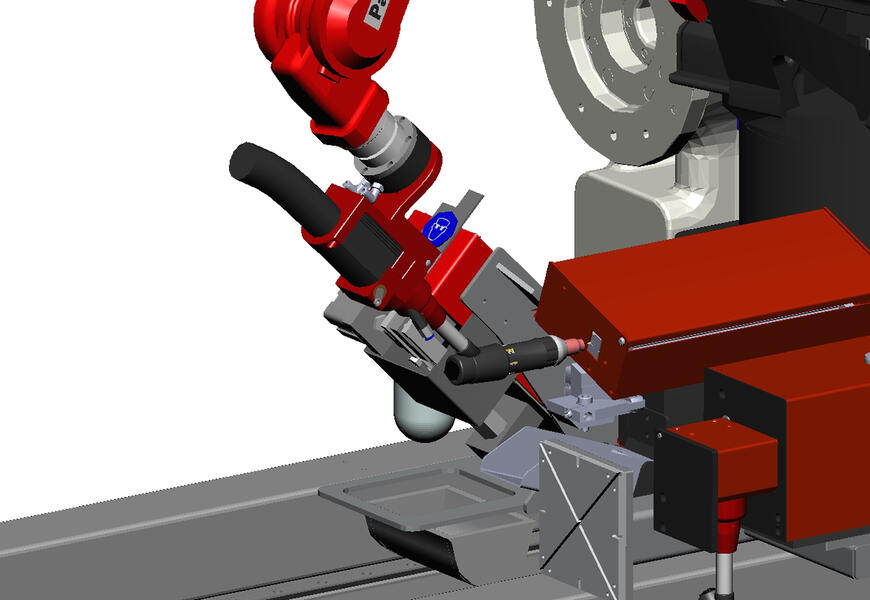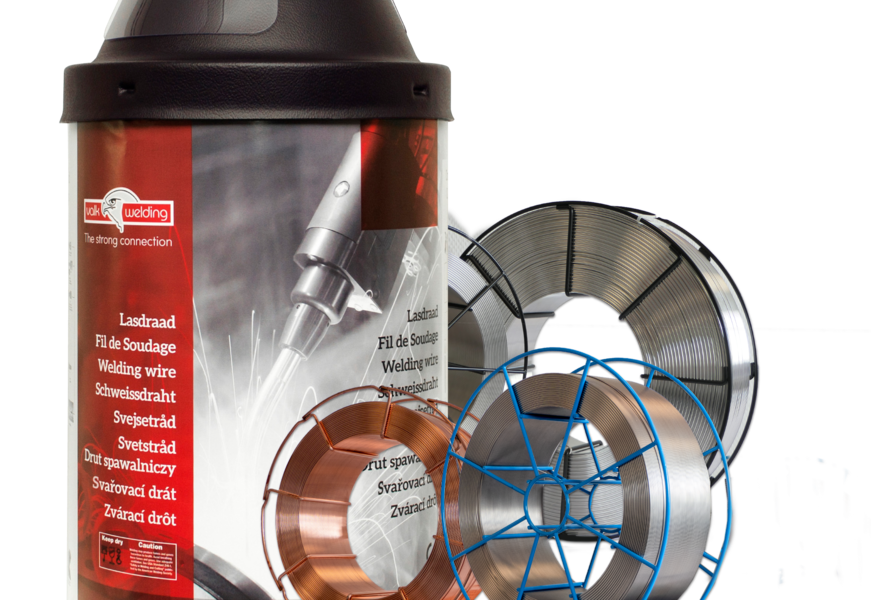1. Precise robot programming is critical to the TIG process.
Although a welding robot forms the basis of the welding process, the quality remains dependent on the programmer. For example, a TIG weld is smaller than a MIG weld, making it more challenging to compensate for a missing tolerance and requiring more precise programming. Programmers must consider parameters such as the distance between the tungsten electrode and the weld pool, and between the tungsten electrode and the filler material. Experienced programmers with knowledge of TIG welding are needed to properly set up these aspects (and more).
2. Your welding robot needs to replace the tungsten tip in time.
The sharpness of the tungsten electrode affects the stability of the arc and therefore the overall quality of the weld. How often you should change the electrode and what constitutes a good margin depends, among other factors, on the quality of the base material. In addition, a starting process option where the tungsten electrode does not need to make contact can reduce the risk of wear. Combined with automated tungsten exchanging, such as Valk Welding's in-house developed tungsten Electrode Exchange System (TEES), the stability and quality of the weld are well maintained.

